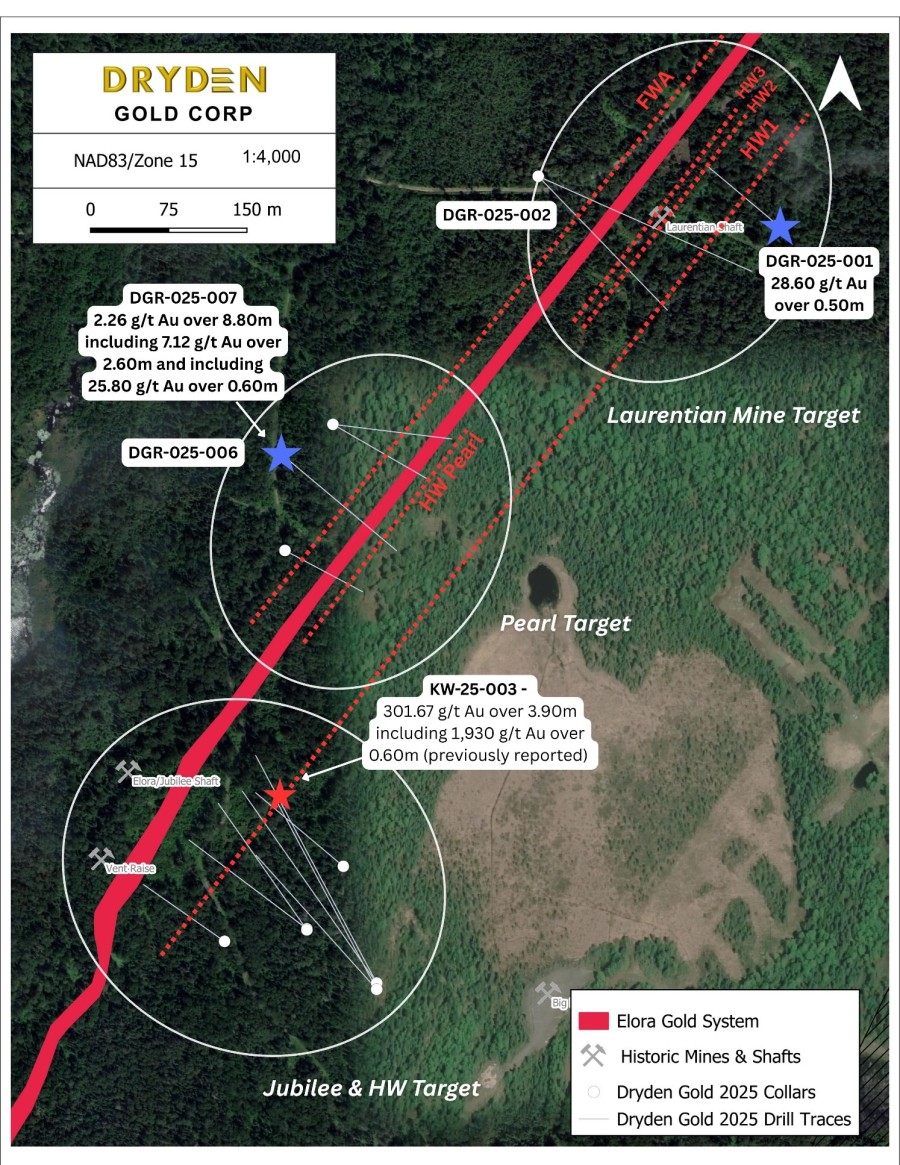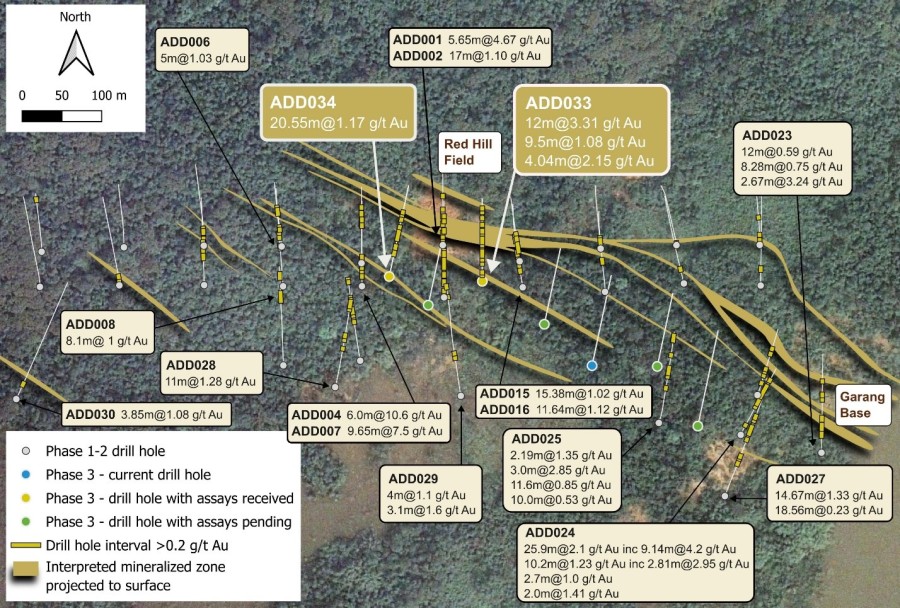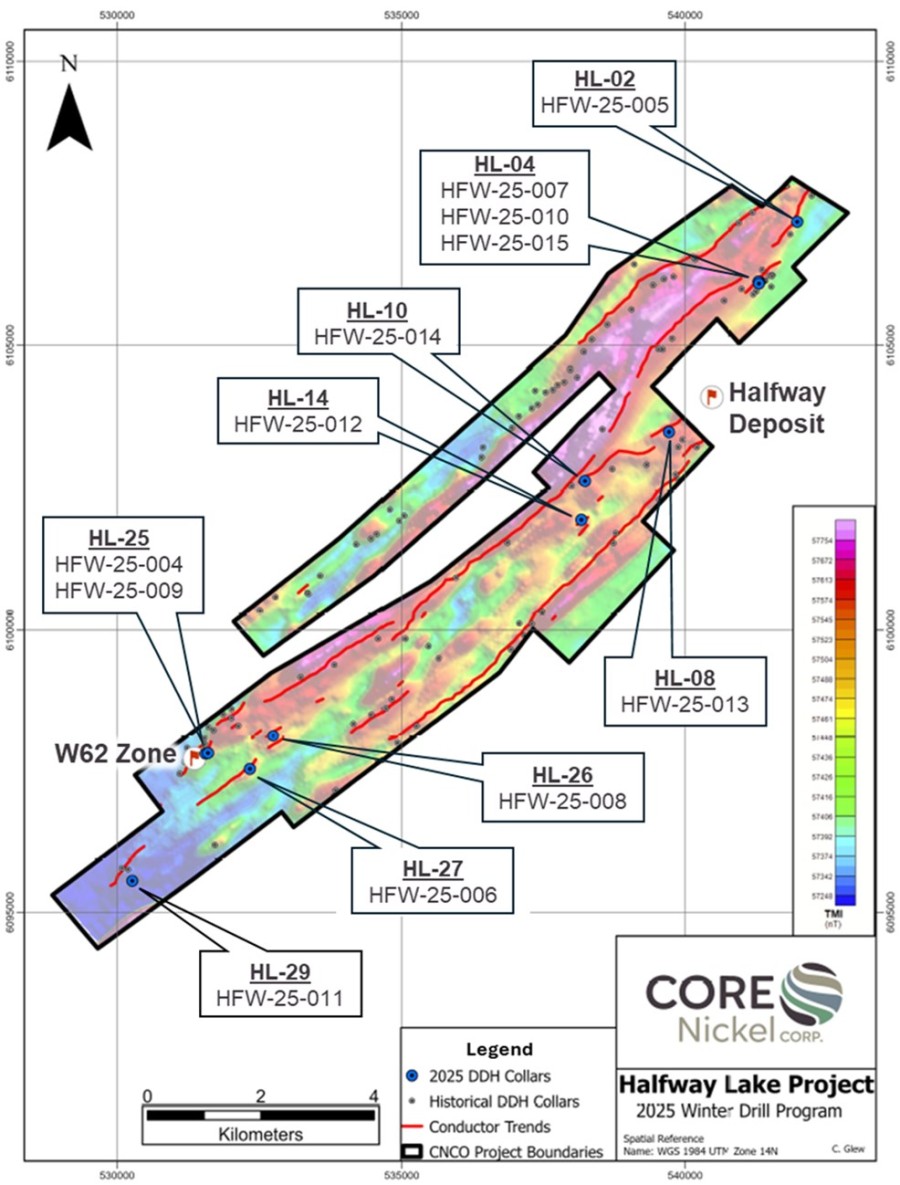VANCOUVER, British Columbia, Jan. 03, 2018 (GLOBE NEWSWIRE) -- Liberty Gold Corp. (TSX:LGD) ("Liberty Gold" or the "Company") is pleased to announce drill results from the Western Zone and Dip Slope Zone at the 100% controlled Goldstrike Gold Project in southwestern Utah. Throughout the Historic Mine Trend, the aggressive exploration program is focused on building continuity between the target areas and linking them together over large areas into continuous zones of mineralization.
The current drill results from the Western Zone are from holes drilled along the north margin of the Moosehead-Caribou Pit, and from the northern margin of the Beavertail Pit and mineralized zone, located 300 metres to the south of the Moosehead Pit.
Highlights from the Moosehead Pit area, Western Zone, include:
- 0.59 grams per tonne gold (g/t Au) over 50.3 metres (m) in PGS413
- 1.70 g/t Au over 24.4 m within 1.13 g/t Au over 45.7 m in PGS414
- 0.48 g/t Au over 35.1 m in PGS416
- 3.09 g/t Au over 4.6 m within 1.14 g/t Au over 30.5 m in PGS418
- 2.06 g/t Au over 4.6 m within 0.80 g/t Au over 47.2 m in PGS422
KEY POINTS
- The highlight holes complete drilling on approximately 50 m-spaced fences along the north margin of the Moosehead Pit, over an east-west strike length of approximately 300 metres.
- The holes extend unmined surface and near-surface mineralization to depth in a north-northwest direction.
- The zone appears to extend further to the west, and awaits further drilling.
- The drilling will add significantly to the mineralization endowment in the Western Zone.
Highlights from the Beavertail Pit area, Western Zone, include:
- 2.35 g/t Au over 4.6 m within 0.72 g/t Au over 22.9 m and 0.69 g/t Au over 7.6 m and 0.55 g/t Au over 21.3 m in PGS433
- 0.76 g/t Au over 38.1 m and 0.50 g/t over 4.6 m in PGS436
KEY POINTS
- The highlight holes represent the first test of the Beavertail Pit area, located 300 m south of the Moosehead Pit.
- The highlight holes represent approximately 50 m step-outs to the northeast of existing mineralization.
- Mineralization starts at surface in this area, which includes a large number of unmined drill holes with gold mineralization at shallow depth.
- Additional drilling is planned for this area, and surface mapping and sampling will address the gap between Beavertail and Moosehead, with further drilling to be carried out if warranted.
Highlights from the Dip Slope Zone include:
- 2.49 g/t Au over 10.7 m within 1.15 g/t over 35.1 m in PGS415
- 1.84 g/t over 19.8 m within 1.06 g/t Au over 50.3 m in PGS421
- 2.23 g/t Au over 6.1 m within 1.05 g/t Au over 21.3 m in PGS440
- 1.47 g/t Au over 18.3 m and 1.06 g/t Au over 3.0 m in PGS445
- 1.63 g/t Au over 9.1 m within 0.96 g/t Au over 36.6 m in PGS450
KEY POINTS
- The Dip Slope is a very large, relatively sparsely drilled area that spans over 2 square kilometres.
- Current drill results include holes from the eastern Dip Slope Zone, which continues to yield excellent results in the area to the north of the Hassayampa historic pit.
- A newly-accessed area of the central Dip Slope Zone, characterized by the presence of extensive jasperoid mineralization with surface grab samples up to 11 g/t Au, is also represented. Mineralization in this area starts at or near surface. Additional drilling is planned for this area.
For a complete table of drill results from the current holes, please click here:
For a complete table of results for all drilling by Liberty Gold at Goldstrike from 2015 to December 2017, please click here:
For a map of drill collars and traces for the current release, please click here:
Goldstrike is located in the eastern Great Basin, immediately adjacent to the Utah/Nevada border, and is a Carlin-style gold system, similar in many ways to the prolific deposits located along Nevada’s Carlin trend. Like Kinsley Mountain and Newmont’s Long Canyon deposit, Goldstrike represents part of a growing number of Carlin-style gold systems located off the main Carlin and Cortez trends in underexplored parts of the Great Basin. The historic Goldstrike Mine operated from 1988 to 1994, with 209,000 ounces of gold produced from 12 shallow pits, at an average grade of 1.2 g/t Au.
Moira Smith, Ph.D., P.Geo., Vice-President Exploration and Geoscience, Liberty Gold, is the Company's designated Qualified Person for this news release within the meaning of National Instrument 43-101 Standards of Disclosure for Mineral Projects ("NI 43-101") and has reviewed and validated that the information contained in the release is accurate. Drill composites were calculated using a cut-off of 0.20 g/t. Drill intersections are reported as drilled thicknesses. True widths of the mineralized intervals vary between 30 and 100% of the reported lengths due to varying drill hole orientations, but are typically in the range of 60 to 80% of true width. Drill samples were assayed by ALS Limited in Reno, Nevada for gold by Fire Assay of a 30 gram (1 assay ton) charge with an AA finish, or if over 5.0 g/t were re-assayed and completed with a gravimetric finish. For these samples, the gravimetric data were utilized in calculating gold intersections. For any samples assaying over 0.200 ppm an additional cyanide leach analysis is done where the sample is treated with a 0.25% NaCN solution and rolled for an hour. An aliquot of the final leach solution is then centrifuged and analyzed by AAS. Metallic screen techniques may be employed where the presence of coarse free gold is suspected. Approximately 1000 grams of coarse reject material are pulverized and screened. Two splits of the fine fraction are assayed, as well as all material that does not pass through the screen (the coarse fraction). The final gold assay reported is a weighted average of the coarse and fine fractions. QA/QC for all drill samples consists of the insertion and continual monitoring of numerous standards and blanks into the sample stream, and the collection of duplicate samples at random intervals within each batch. Selected holes are also analyzed for a 51 multi-element geochemical suite by ICP-MS. ALS Geochemistry-Reno is ISO 17025:2005 Accredited, with the Elko prep lab listed on the scope of accreditation.
Goldstrike is an early-stage exploration project and does not contain any mineral resource estimates as defined by NI 43-101. The potential quantities and grades disclosed herein are conceptual in nature and there has been insufficient exploration to define a mineral resource for the targets disclosed herein. It is uncertain if further exploration will result in these targets being delineated as a mineral resource. Further information on Goldstrike is available in the technical report entitled "Technical Report on the Goldstrike Project, Washington County, Utah, U.S.A.", effective April 1, 2016 and dated October 7, 2016, prepared by Michael M. Gustin, C.P.G. and Moira Smith, Ph.D., P.Geo. found at the top of this page or under Liberty Gold's issuer profile in SEDAR (www.sedar.com).
ABOUT LIBERTY GOLD
Liberty Gold is led by a proven technical and capital markets team that continues to discover and define high-quality assets. Our flagship property is the Goldstrike Oxide Gold Project in Utah. Liberty also has a pipeline of projects, including Black Pine in Idaho and Kinsley Mountain in Nevada, providing a solid platform for future growth. Over the past 5 years, there have been 8 new open-pit, heap leach gold mines built around the world and the management team and/or directors of Liberty Gold are responsible for discovering, developing and/or building two of them. Long Canyon in Nevada (Fronteer Gold) and Karma in Burkina Faso (True Gold) both reached commercial production in 2016.





